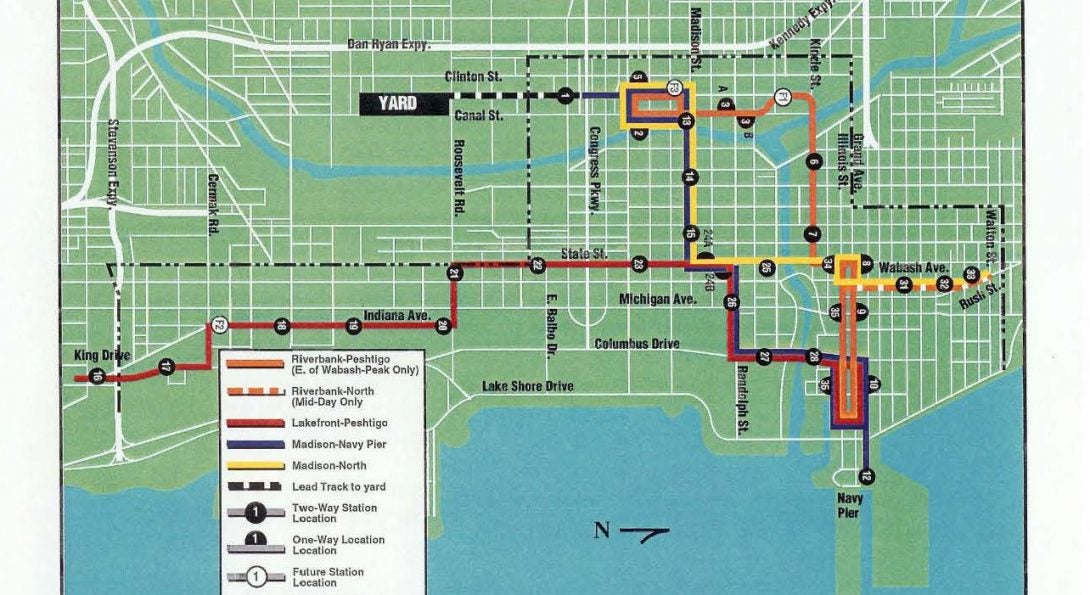Incremental Approach May Have Given Green Light to Proposed 1990’s Chicago Central Area Circulator Project

Historical Report Outlines Factors Behind Stoppage of Light Rail Line and Chronicles History of Downtown Public Transit
The Chicago Central Area Circulator, a planned light rail network serving downtown Chicago and surrounding areas, may have been built if the expansive new project had been initiated with service along one specific corridor, rather than four separate lines as originally planned.
That was a key conclusion made in “The History of the City of Chicago Central Area Transit Circulation Efforts,” a report that details plans that originated in the late-1980s to build the new surface rail system.
As noted in the document, “The main lesson learned from the Circulator Project was that trying to serve all the primary corridors of travel in the Central Area was more than the project could successfully achieve. The alignment decision process and the community involvement strategy, though necessary, was overly time consuming and delayed the resolution of the Final Environmental Impact statement by one year…” By then political change in the federal and Illinois State capitols, doomed the project’s funding plan.
According to the report, the goals of the Circulator project — formally closed in 1995 — were to bolster transportation links to neighborhoods and commuter transit lines, enhance the Central Area’s social and economic environments, and serve as a catalyst for growth.
The report details the significant research undertaken to identify specific corridors that could benefit from the new rail service, which would incorporate on-street light rail technology (LRT), a user-friendly, electrified system with track embedded in existing street lanes. The public-partnership behind the Circulator Project initially created sound financial and operational plans that pooled federal funding, state grants and local tax revenues.
In its conclusion, the report praises Chicago’s Loop Link bus rapid transit service as perhaps the catalyst for bold, new transportation planning: “Hopefully the experience of the Loop Link will help to generate once again a comprehensive Central Area transportation plan that heeds the lessons from past failures, incorporates adjustments for the impact of new transportation services – ride hailing, protected bike lanes and Divvy bike sharing — and leads to a well-balanced and effective transportation system the Central Area needs to maximize its current and future population and economic growth.”
The document also includes two other chapters that address Chicago transit: The evolution of the city’s Central Area transportation network in the late 19th and early 20th centuries, and plans that originated in the 1950s to redevelop the Chicago Transit Authority rapid transit rail network.
Please click here to download a pdf version of the Central Area Circulation study.
“The History of the City of Chicago Central Area Transit Circulation Efforts” was written by Stephen E. Schlickman, JD, and Laura Klabunde, MUPP. Note: Mr. Schlickman was Executive Director of the Chicago Central Area Circulator Project from 1992 to 1995.
The project was managed by the Urban Transportation Center at the University of Illinois at Chicago and funded through the National University Rail Center (NURail) and the Illinois Department of Transportation’s Metropolitan Transportation Support Initiative (METSI) program.